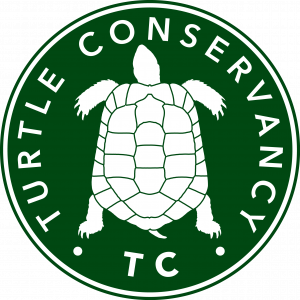Geochelone elegans, 106
Download pdf
Geochelone elegans (Schoepff 1795) –
Indian Star Tortoise, Star Tortoise
Neil D’Cruze1,2, Aniruddha Mookerjee1, Raju Vyas3,
David W. Macdonald1, and Anslem de Silva4
1The Wildlife Conservation Research Unit, Department of Zoology, University of Oxford,
The Recanati-Kaplan Centre, Tubney House, Abingdon Road, Tubney, OX13 5QL, United Kingdom
2World Animal Protection 1, 222 Grays Inn Road, London, WC1X 8HB, United Kingdom;
3505 Krishnadeep Tower, Mission Road, Fatehganj-Vadodara, 390002, Gujarat, India [[email protected]];
Summary. – The Indian Star Tortoise, Geochelone elegans (Family Testudinidae) is a medium-sized tortoise endemic to the Indian subcontinent. Typical straight carapace length (CL) of females is up to 32 cm, with males up to 26 cm, but females of greater than 50 cm CL are known. The species occurs in scrub forests, grasslands, and some coastal scrublands of arid and semi-arid regions throughout its range, but also commonly inhabits human-dominated landscapes, including agricultural fields, hedgerows, and plantations. Geochelone elegans is most active during the monsoon rains when it is known to forage and copulate throughout the day. Females typically produce two clutches annually, usually comprising 2–10 eggs per clutch. Generation time has been estimated to be about 10 years. Outside of the monsoon season the species is predominantly crepuscular, typically venturing out in early morning and late afternoon, hiding under bushes or tufts of grass throughout the rest of the day and night. The species is largely herbivorous, feeding on various grasses, herbaceous succulent vegetation, fruits, and fallen flowers. It is also known to scavenge on animal matter, including centipedes, insects, slugs, snails, excreta of dogs and birds, and carrion. The main current threats to the survival of G. elegans include illegal collection, habitat loss, and accidental killings, including road mortality. Illegal collection for the international wildlife trade is the most serious concern for the species. Numerically, G. elegans is the single most confiscated species of tortoise or freshwater turtle in the global illegal wildlife trade. While some small-scale captive breeding may be occurring at some zoos and with some private keepers, few of the offspring are traded internationally, and no large-scale commercial captive production facilities are known to exist. Future conservation efforts hinge on increased legal protection inside and outside of range states, including possible uplisting on to CITES Appendix I, cooperation between relevant enforcement bodies, and the implementation of human behavioral change initiatives focused on reducing consumer demand for this protected species.
Distribution. – India, Pakistan, and Sri Lanka. Occurs in several disjunct populations in northwestern India and extreme southeastern Pakistan, southeastern and southern India, and Sri Lanka.
Synonymy. – Testudo elegans Schoepff 1795, Chersine elegans, Peltastes stellatus elegans, Geochelone elegans, Geochelone elegans elegans, Testudo stellata Schweigger 1812 (nomen novum), Geochelone (Geochelone) stellata, Geochelone stellata, Peltastes stellatus, Testudo actinodes Bell 1828, Testudo actinoides Bell in Gray 1844 (nomen novum), Peltastes stellatus actinoides, Testudo megalopus Blyth 1854, Peltastes stellatus maura Gray 1870, Peltastes stellatus seba Gray 1870.
Subspecies. – None currently recognized.
Citation:
D’Cruze, N., Mookerjee, A., Vyas, R., Macdonald, D.W., and de Silva, A. 2018. Geochelone elegans (Schoepff 1795) – Indian Star Tortoise, Star Tortoise. In: Rhodin, A.G.J., Iverson, J.B., van Dijk, P.P., Stanford, C.B., Goode, E.V., Buhlmann, K.A., Pritchard, P.C.H., and Mittermeier, R.A. (Eds.). Conservation Biology of Freshwater Turtles and Tortoises: A Compilation Project of the IUCN/SSC Tortoise and Freshwater Turtle Specialist Group. Chelonian Research Monographs 5(12):106.1–13. doi: 10.3854/crm.5.106.elegans.v1.2018; iucn-tftsg.org/cbftt/.
Download pdf
(Adobe Acrobat 6.0 or later required)

Geochelone elegans, adult female, from Gir Wildlife Sanctuary and National Park, Gujarat, India.
Photo by R. Vyas.
Distribution:

Distribution of Geochelone elegans in Pakistan, India, and Sri Lanka. Yellow dots = museum and literature occurrence records of native populations based on Iverson (1992) plus more recent and authors’ data; orange dots = uncertain native or trade or introduced specimens; red shading = projected historic distribution. Distribution based on GIS-defined level 10 HUCs (hydrologic unit compartments) constructed around verified localities and then adding HUCs that connect known point localities in the same watershed or physiographic region, and similar habitats and elevations as verified HUCs (Buhlmann et al. 2009; TTWG 2017), and adjusted based on authors’ subsequent data.










